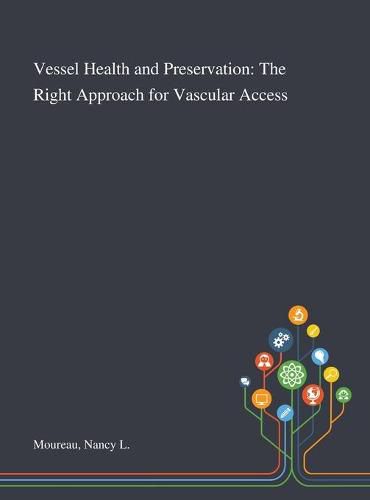Readings Newsletter
Become a Readings Member to make your shopping experience even easier.
Sign in or sign up for free!
You’re not far away from qualifying for FREE standard shipping within Australia
You’ve qualified for FREE standard shipping within Australia
The cart is loading…






This title is printed to order. This book may have been self-published. If so, we cannot guarantee the quality of the content. In the main most books will have gone through the editing process however some may not. We therefore suggest that you be aware of this before ordering this book. If in doubt check either the author or publisher’s details as we are unable to accept any returns unless they are faulty. Please contact us if you have any questions.
This Open access book offers updated and revised information on vessel health and preservation (VHP), a model concept first published in poster form in 2008 and in JVA in 2012, which has received a great deal of attention, especially in the US, UK and Australia. The book presents a model and a new way of thinking applied to vascular access and administration of intravenous treatment, and shows how establishing and maintaining a route of access to the bloodstream is essential for patients in acute care today. Until now, little thought has been given to an intentional process to guide selection, insertion and management of vascular access devices (VADs) and by default actions are based on crisis management when a quickly selected VAD fails. The book details how VHP establishes a framework or pathway model for each step of the patient experience, intentionally guiding, improving and eliminating risk when possible. The evidence points to the fact that reducing fragmentation, establishing a pathway, and teaching the process to all stakeholders reduces complications with intravenous therapy, improves efficiency and diminishes cost. As such this book appeals to bedside nurses, physicians and other health professionals. This work was published by Saint Philip Street Press pursuant to a Creative Commons license permitting commercial use. All rights not granted by the work’s license are retained by the author or authors.
$9.00 standard shipping within Australia
FREE standard shipping within Australia for orders over $100.00
Express & International shipping calculated at checkout
This title is printed to order. This book may have been self-published. If so, we cannot guarantee the quality of the content. In the main most books will have gone through the editing process however some may not. We therefore suggest that you be aware of this before ordering this book. If in doubt check either the author or publisher’s details as we are unable to accept any returns unless they are faulty. Please contact us if you have any questions.
This Open access book offers updated and revised information on vessel health and preservation (VHP), a model concept first published in poster form in 2008 and in JVA in 2012, which has received a great deal of attention, especially in the US, UK and Australia. The book presents a model and a new way of thinking applied to vascular access and administration of intravenous treatment, and shows how establishing and maintaining a route of access to the bloodstream is essential for patients in acute care today. Until now, little thought has been given to an intentional process to guide selection, insertion and management of vascular access devices (VADs) and by default actions are based on crisis management when a quickly selected VAD fails. The book details how VHP establishes a framework or pathway model for each step of the patient experience, intentionally guiding, improving and eliminating risk when possible. The evidence points to the fact that reducing fragmentation, establishing a pathway, and teaching the process to all stakeholders reduces complications with intravenous therapy, improves efficiency and diminishes cost. As such this book appeals to bedside nurses, physicians and other health professionals. This work was published by Saint Philip Street Press pursuant to a Creative Commons license permitting commercial use. All rights not granted by the work’s license are retained by the author or authors.